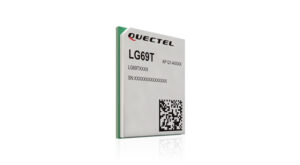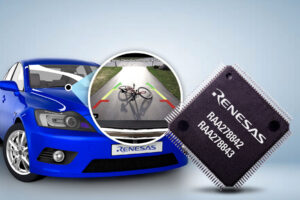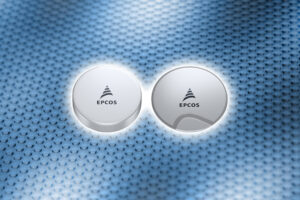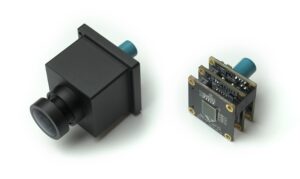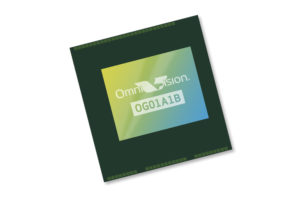Quectel Wireless Solutions Co., Ltd., in association with STMicroelectronics, announced the release of the LG69T module, an automotive-grade dual-band high-precision GNSS module that integrates dead reckoning (DR) and real-time kinematic (RTK) technologies. The new Quectel module, announced at 2019 Apsara Conference in Hangzhou, is designed to facilitate open sky positioning performance with an accuracy of […]
Automotive
Full vehicle HD 1080p LCD video controller includes 4-lane MIPI-CSI2 input
Renesas introduced the RAA278842 LCD video controller – the automotive industry’s first full HD 1080p LCD video controller to include a 4-lane MIPI-CSI2 input, designed to help automotive system manufacturers develop versatile and reliable display systems to promote the highest level of HMI graphics for analog and digital video content. Built with a 4-lane (or […]
Clock generators, buffers, and PCIe clocks/buffers AEC-Q100-qualified for auto apps
Automotive-grade timing solutions are designed to meet the demanding clocking needs of in-vehicle systems. The new AEC-Q100-qualified timing devices include Si5332 any-frequency programmable clock generators, Si5225x PCIe Gen1/2/3/4/5 clocks, Si5325x PCIe buffers and Si5335x fanout clock buffers. These timing devices help automotive OEMs and Tier-1 suppliers simplify clock tree design, reduce system points of failure, […]
Ultrasonic sensor disks offer serial resonance frequency of 2000 kHz
TDK Corporation presents a new series of ceramic-based EPCOS ultrasonic sensor disks, comprising two standard types. The B59050Z0206A030 sensor disk has a diameter of 5.0 mm and thickness of 1.02 mm. With a serial resonance frequency of 2000 kHz it features thickness oscillation mode (axial), making is suitable for use in liquid media. The B59070Z0285D12* […]
Processor IP supports ASIL B and ASIL D safety levels to simplify safety-critical automotive SoC development
Synopsys announced new functional safety (FS) derivatives of its popular DesignWare ARC processor IP to simplify and accelerate the development of automotive system-on-chips (SoCs). The safety-enhanced processor portfolio, which includes the Synopsys DesignWare ARC EM22FS, HS4xFS, and EV7xFS processors, covers a broad range of automotive use cases from ultra-low power control modules to artificial intelligence […]
Automotive SoC for rear and surround view cameras features low-light performance, low power, small size
OmniVision Technologies, Inc. announced from the AutoSens conference its 1.3MP OX01F10 SoC, providing automotive designers with the industry’s best imaging performance across a wide range of challenging lighting conditions, along with the most compact form factor and lowest power consumption. In a single, 1/4” optical format package, the OX01F10 integrates a 3.0 micron image sensor and […]
Sensor kit helps develop mobile/transportation apps
Heat, cold, shock, vibration, water, mud or dust – modern mobile machines must work reliably under all kinds of conditions. To ensure this, the machines need sensors that record and provide data continuously even under the harshest conditions. To acquire and send this data, sensor specialist Siko has developed PURE.MOBILE technology and brought it onto […]
New chipset enables 2.5-Gb Ethernet over single UTP wire with near-zero latency
The VA608A chipset provides the high-speed bandwidth and resilience required for the many applications in the connected and autonomous car, guaranteeing a flexible and future-proof architecture. The chipset delivers data transmission speeds of up to 16 Gbps and enables automakers to extend native PCIe as a long-distance in-vehicle connectivity technology – up to 15 m/50 […]
Triple redundant IMU assists in developing navigation and localization for autonomous vehicles
Acienna announced the new ACEINNA OpenIMU330B, a MEMS-based, small form factor high-performance 6-DOF inertial measurement unit that enables autonomous vehicles to accurately stay on track during turns and complicated maneuvers. Measuring only 11mm x 15mm x 3mm, the ACEINNA OpenIMU330B is designed for use in automotive ADAS and autonomous systems as well as for electronic […]
Image sensor carries super-small BSI global shutter pixel
OmniVision Technologies, Inc. announced the smallest-ever pixel size of 2.2 microns for a backside-illuminated (BSI), global shutter (GS) image sensor. The new OG01A sensor combines PureCel Plus-S pixel technology and Nyxel near-infrared (NIR) technology to enable optimal performance and precision along with industry-leading NIR quantum efficiency (QE). This sensor is ideal for a wide range […]
